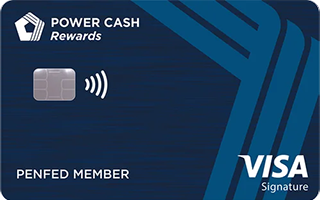Both the PenFed Power Cash Rewards Visa Signature® Card and the Capital One Quicksilver Cash Rewards Credit Card offer appealing cash back rewards and no annual fees. The Capital One Quicksilver edges ahead with its higher cash back rate on all purchases and a lower required spend for its welcome bonus. It requires a credit score range of 670 to 850 (good to excellent).
Still a strong contender, the PenFed Power Cash Rewards card has a higher rewards tier for qualified cardholders. It also requires a good to excellent credit score.















